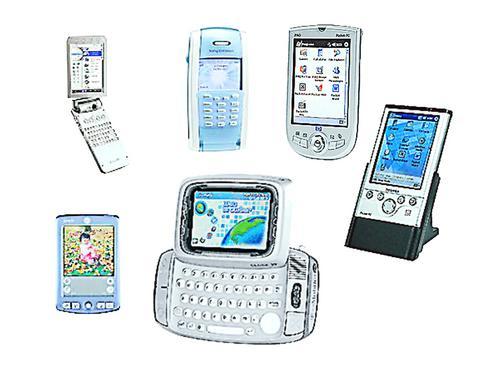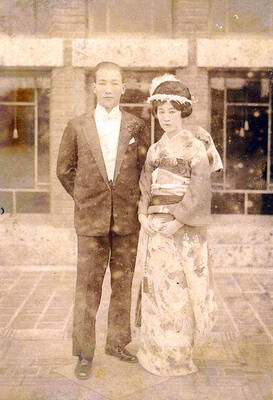As a semi-reformed gadget geek, it's hard to look at today's line of handheld computers with an objective eye. I still remember the euphoria with which I brought home my Apple Newton and the slow realization that the device was not going to make me more productive -- or even more organized.
Of course that was nearly a decade ago. One of the primary reasons my Newton didn't have the organizational effect on my life that I'd expected was because I never purchased the hardware that would have allowed it to become a communications device, effectively cutting its potential in half.
Ten years ago, the card I would have needed to make the device wireless cost almost as much as the machine itself. But advances in communications technology since then, coupled with a drastic reduction in its cost, have made owning a handheld computer almost worthwhile. Without this communications capability, a handheld computer is little more than an electronic pad of paper, which leads to a caveat emptor: if you're not one to take notes, enter addresses and phone numbers in an organizer or record your daily expenses, a PDA will not make you more productive or more organized, it will only make you about 200 grams heavier and at least US$300 lighter.

PHOTOS COURTESY OF THE MANUFACTURER
For the undeterred, the first step in choosing the handheld device that best suits your needs is deciding on one of two main operating systems: Palm or Pocket PC. Palm, which pioneered the handheld market with their Pilot PDAs, helps you organize your information and synch it with your main computer just as you'd expect, but also looks beyond your computer, often trying to integrate an MP3 player or maybe a wireless telephone in the device. Microsoft's Pocket PC ships with its own version of Excel and Word and will synch almost flawlessly with Microsoft's Outlook organizational software, making it an obvious choice for Microsoft lemmings who want plug-and-play performance. What's more, Pocket PC devices usually offer more RAM and greater processor speeds and are generally more expensive than their Palm counterparts.
The next decision to make is whether you want wireless connectivity built in to the device or if you want to add it on later via a wireless LAN card or Bluetooth card. (To understand why going without communications capability is unwise, see the earlier remark on electronic pads of paper.)
The main difference here is that buying communications technology already built into the unit adds as much as US$200 to the price tag whereas adding it later defers that cost at the expense of having a plastic nub protruding from the unit. One benefit of adding a communications card later is that you can choose if you want LAN or Bluetooth, each of which carry their own benefits. A wireless LAN card allows you to browse the Web, access POP 3 e-mail accounts and synchronize your data with your main computer. Sony's LAN card for its Clie brand handhelds costs US$150. For half that price, Bluetooth enables your PDA to communicate with any similarly enabled device, including your computer, telephone and printer.
The choice here is easy: if nothing you own is Bluetooth-enabled, you don't want to start with your PDA.
Beyond these two main decisions, buying a PDA is really a matter of taste. A few of the machines that have garnered the most praise and subsequently sold the best are Hewlett-Packard's iPaq H1940 (US$320) and the Toshiba e750 (US$520), both of which run Pocket PC operating system, and the Palm Zire 71 (US$280) and Sony Clie models, which run the Palm operating system.
A range of devices offer additional functionality -- if you can figure out a use for it. Sony's Clie PEG NX70V (US$500) sports a built-in camera and, most noticeably, a swivel LCD screen that reveals a keyboard the size of a Post-it. Given that you use the device in your hand -- which being at the end of your arm can already point the screen in any direction -- I am not sure what added functionality a swivel screen provides. The employees of the electronics stores where I enquired were likewise baffled, but one offered the most likely answer: "It looks cool."
In truth, a swivel screen is exactly the kind of thing that scratches all that itches gadget geeks. Nobody needs a swivel screen on a handheld computer. For that matter, not many people need a PDA. As a semi-reformed gadget geek still fascinated by handheld computers, I believe the best advice is to wait before you buy.
The future of handheld computing is telephony, as is evident in a number of devices such as the T-Mobile Sidekick, Nokia's 9210 Communicator or Sony Ericsson's P800 (US$500), the latter of which combines your PDA, cellphone, digital camera and MP3 player. The SonyEricsson model has created a lot of hype and generated some positive reviews, but each of these devices are among the first of their kind.
Better to wait until other manufacturers enter the field and competition -- and other consumers -- help to work out the kinks. These machines are presently very bulky (the Nokia model looks like a cellphone from the late 1980s) and very expensive. What's more, many employ proprietary software for the PDA, making synching it with your computer a hassle. The Sidekick, for instance, requires that you input your contacts and notes to T-Mobile's Web site before transferring the information to your phone. Any work done on the Sidekick must likewise be uploaded to the same Web site.
When all these issues (price, bulk, ease of use and reliability) are ironed out, owning a PDA/phone won't just be for gadget geeks -- it might actually make you more productive and organized.

Under pressure, President William Lai (賴清德) has enacted his first cabinet reshuffle. Whether it will be enough to staunch the bleeding remains to be seen. Cabinet members in the Executive Yuan almost always end up as sacrificial lambs, especially those appointed early in a president’s term. When presidents are under pressure, the cabinet is reshuffled. This is not unique to any party or president; this is the custom. This is the case in many democracies, especially parliamentary ones. In Taiwan, constitutionally the president presides over the heads of the five branches of government, each of which is confusingly translated as “president”

Sept. 1 to Sept. 7 In 1899, Kozaburo Hirai became the first documented Japanese to wed a Taiwanese under colonial rule. The soldier was partly motivated by the government’s policy of assimilating the Taiwanese population through intermarriage. While his friends and family disapproved and even mocked him, the marriage endured. By 1930, when his story appeared in Tales of Virtuous Deeds in Taiwan, Hirai had settled in his wife’s rural Changhua hometown, farming the land and integrating into local society. Similarly, Aiko Fujii, who married into the prominent Wufeng Lin Family (霧峰林家) in 1927, quickly learned Hoklo (commonly known as Taiwanese) and

The Venice Film Festival kicked off with the world premiere of Paolo Sorrentino’s La Grazia Wednesday night on the Lido. The opening ceremony of the festival also saw Francis Ford Coppola presenting filmmaker Werner Herzog with a lifetime achievement prize. The 82nd edition of the glamorous international film festival is playing host to many Hollywood stars, including George Clooney, Julia Roberts and Dwayne Johnson, and famed auteurs, from Guillermo del Toro to Kathryn Bigelow, who all have films debuting over the next 10 days. The conflict in Gaza has also already been an everpresent topic both outside the festival’s walls, where

The low voter turnout for the referendum on Aug. 23 shows that many Taiwanese are apathetic about nuclear energy, but there are long-term energy stakes involved that the public needs to grasp Taiwan faces an energy trilemma: soaring AI-driven demand, pressure to cut carbon and reliance on fragile fuel imports. But the nuclear referendum on Aug. 23 showed how little this registered with voters, many of whom neither see the long game nor grasp the stakes. Volunteer referendum worker Vivian Chen (陳薇安) put it bluntly: “I’ve seen many people asking what they’re voting for when they arrive to vote. They cast their vote without even doing any research.” Imagine Taiwanese voters invited to a poker table. The bet looked simple — yes or no — yet most never showed. More than two-thirds of those